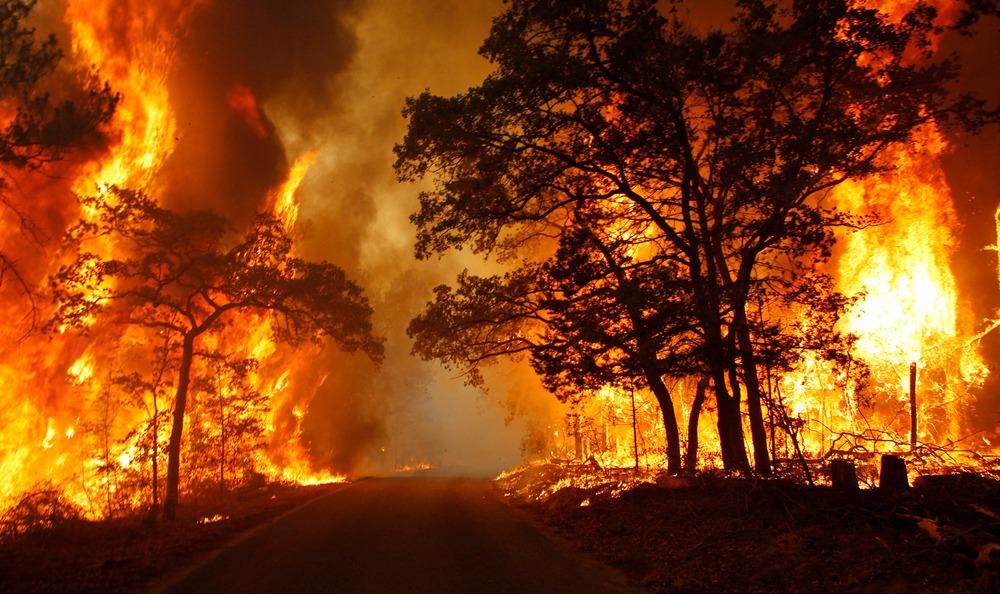“Wildfire charcoal is ubiquitous in many landscapes around the world and a comprehensive understanding of its effects on the climate system, ecosystem function, and environmental health is therefore fundamental.”

Image Credit: Avula Kodanda Raghuveer/Shutterstock.com
Wildfires are a natural process that occur in ecosystems to spur periods of regrowth and regeneration. However, with an increased human influence on the rising frequency of anthropogenically and naturally caused wildfires, much remains to be studied about the environmental implications of these events. Specifically, wildfires produce the material charcoal, a valuable energy source that can be found in a diverse array of landscapes and has an effect on climate systems and overall ecosystem health. Charcoal holds this influence within the natural environment partly because of its role as a source of environmentally persistent free radicals (EPFRs).
Volatile in nature, free radicals are precursors to reactive elemental forms like oxygen that pose a potential threat to the environment. EPFRs have been associated with negative consequences on natural systems. From adverse effects on a minuscule scale to bacteria and individual cell functioning as well as disruption of entire processes like effective plant growth and development, EPFRs pose a potential threat to living systems (including humans).
While previous studies have focused on charcoal as a pollutant and its role in disrupting natural nutrient cycles, little is known about charcoal as a source for environmentally persistent free radicals. A team of European researchers from universities across Austria, Spain, and the United Kingdom set out to investigate more about EPFRs, specifically focusing on the concentration levels and stability lifetime of them in wildfire charcoals.
Measuring the Levels and Stability of Free Radicals in Wildfire Charcoal Samples
The research team analyzed 60 wildfire charcoal samples that were collected from 10 different wildfire sites to ensure conclusions could be drawn across diverse ecosystems in the study. For example, samples originated from ecosystems including the forest, shrubland, and grasslands across varying climates like tropical, subtropical and temperate.
After collection, the research team then characterized the wildfire charcoals using a series of physical and chemical analytics methods. Specifically, ESR spectroscopy was performed on samples using an X-band Bruker Elexsys-II E500 ESR spectrometer (Bruker Biospin GmbH), with a modulation frequency of 100 kHz and a microwave frequency of 9.8 GHz. Further measurements and calculations were performed using Bruker Win ESR Acquisition software. The data was then analyzed.
This research study found high concentrations of EPFRs in wildfire charcoals. Furthermore, the study found that the levels of EPFRs in the analyzed samples were positively related to the amount of carbon also recorded in the charcoal.
Not only did this investigation reveal information about the amount of EPFRs in wildfire charcoals, but also provided insight into the nature of the EPFRs. The scientist group concluded that EPFRs in wildfire charcoal remain stable for years. During their experiments, they observed miniscule reductions in EPFR concentrations over four years after a wildfire event with a slightly higher decrease during the fifth year following a fire and formation of free radical filled charcoals.
The high concentrations coupled with the high stability of EPFRs in natural ecosystems pose significant environmental implications. Should charcoal and EPFRs within it reach and pollute water sources, the EPFRs could metamorphose into highly unstable and toxic forms.
However, the researchers contend that further study is necessary to accurately understand and draw conclusions on the extent and intensity of the environmental risks wildfire charcoal EPFRs pose. Especially with shifting global conditions and increased wildfires from both natural and human-induced causes, examining EPFRs in charcoal is crucial in understanding environmental dynamics.
Electron Spin Resonance (ESR) or also referred to as Electron Paramagnetic Resonance (EPR) is extremely sensitive to detecting unpaired electron spins in any kind of matter. Organic radicals carry such unpaired electrons and are involved in various processes from oxidative aging of food stuffs and cosmetics via polymer degradation and asphaltenes detection in crude oil to, as described here, charcoal included in wildfire debris.
Bruker’s unique EPR instrument and solution portfolio ranges from push-button quality control tools to sensititvity enhanced research instrumentation.
Reference
- Sigmund, G., Santín, C., Pignitter, M. et al. Environmentally persistent free radicals are ubiquitous in wildfire charcoals and remain stable for years. Commun Earth Environ 2, 68 (2021). https://doi.org/10.1038/s43247-021-00138-2

This information has been sourced, reviewed and adapted from materials provided by Bruker BioSpin - NMR, EPR and Imaging.
For more information on this source, please visit Bruker BioSpin - NMR, EPR and Imaging.